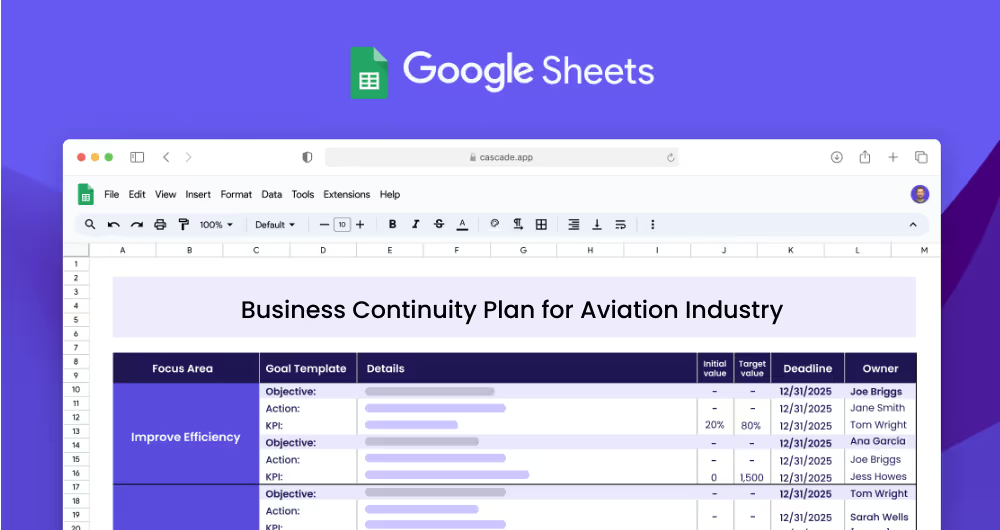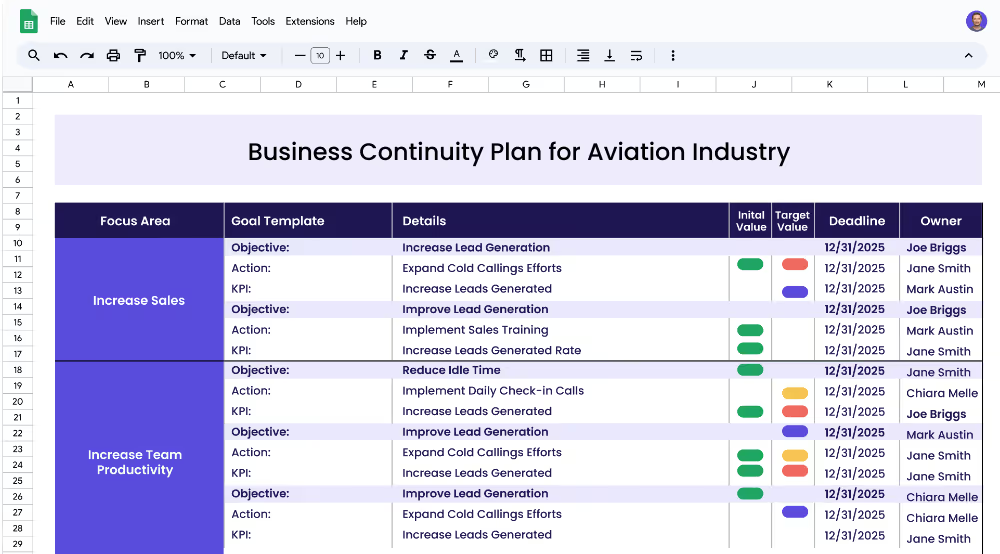A business continuity plan (BCP) for the aviation industry is a plan with strategies, policies, and procedures that outlines how the organization plans to respond to and recover from a disaster, potential risk or disruption in operations. It is designed to protect the safety of passengers and employees, minimize financial losses, and maintain the overall operations of the aviation company.
Each focus area has its own objectives, projects, and KPIs to ensure that the strategy is comprehensive and effective.
This template is designed for aviation companies, airlines, airports, and related organizations to develop their business continuity plans, addressing the specific risks and challenges faced by the industry. It outlines the goals, objectives, actions, and measurements that should be included in a business continuity plan to ensure the safety of personnel and operations.
A focus area is a broad topic within the business continuity plan that outlines the goals and objectives of the company. Examples of focus areas for the aviation industry include risk mitigation, emergency readiness, and supply chain management.
Objectives are goals that should be met within each focus area in order to achieve the overall goal of the business continuity plan. For example, an objective for the risk mitigation focus area could be to improve risk awareness.
KPIs (Key Performance Indicators) are measurable targets that should be set in order to assess the progress of the plan. For example, a KPI for the objective 'Increase Risk Management Knowledge' could be 'Increase Risk Management Training Completion'. An example of a KPI for the focus area of Risk Mitigation could be: Increase Compliance with Risk Mitigation Policies.
Projects are actions that should be completed in order to achieve the KPIs. For example, an action for the KPI 'Increase Risk Management Training Completion' could be 'Educate Employees on Risk Management'.
If you’re ready to streamline your overall strategic response and handle disruptions more proactively, opting for Cascade Strategy Execution Software could be your next strategic move. Cascade outpaces traditional spreadsheets by providing a centralized platform that offers real-time updates, automated reporting, and enhanced collaboration features, thereby making it simpler for teams to track progress, quickly adapt to changes, and stay aligned with strategic goals. Sign-up for free or book a demo with one of our strategy experts to see how you can elevate your business continuity strategy today!


